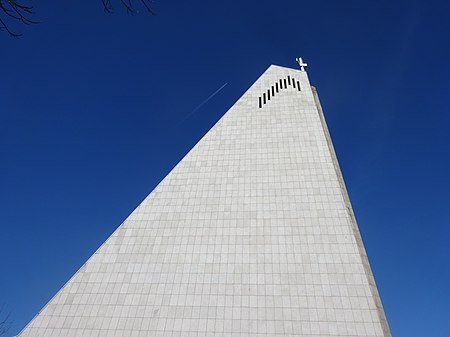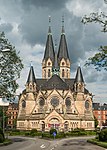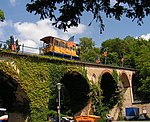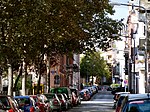Mariä Heimsuchung, Wiesbaden
1966 establishments in Germany20th-century Roman Catholic church buildings in GermanyChurches in WiesbadenChurches in the Diocese of LimburgRoman Catholic churches completed in 1966 ... and 1 more
Roman Catholic churches in Hesse

Mariä Heimsuchung (Mary's Visitation) in Wiesbaden, Hesse, Germany, is a Catholic church in Kohlheck, part of Wiesbaden's suburb of Dotzheim, consecrated in 1966. It is dedicated to the Visitation (Heimsuchung). The tall concrete building is a landmark of Wiesbaden. It features two large triptychs by the Wiesbaden painter Otto Ritschl. The parish Mariä Heimsuchung is now part of a larger parish, in the Diocese of Limburg.
Excerpt from the Wikipedia article Mariä Heimsuchung, Wiesbaden (License: CC BY-SA 3.0, Authors, Images).Mariä Heimsuchung, Wiesbaden
Helmholtzstraße, Wiesbaden Dotzheim
Geographical coordinates (GPS) Address External links Nearby Places Show on map
Geographical coordinates (GPS)
| Latitude | Longitude |
|---|---|
| N 50.081944444444 ° | E 8.1938888888889 ° |
Address
Mariae Heimsuchung
Helmholtzstraße 54
65199 Wiesbaden, Dotzheim
Hesse, Germany
Open on Google Maps









